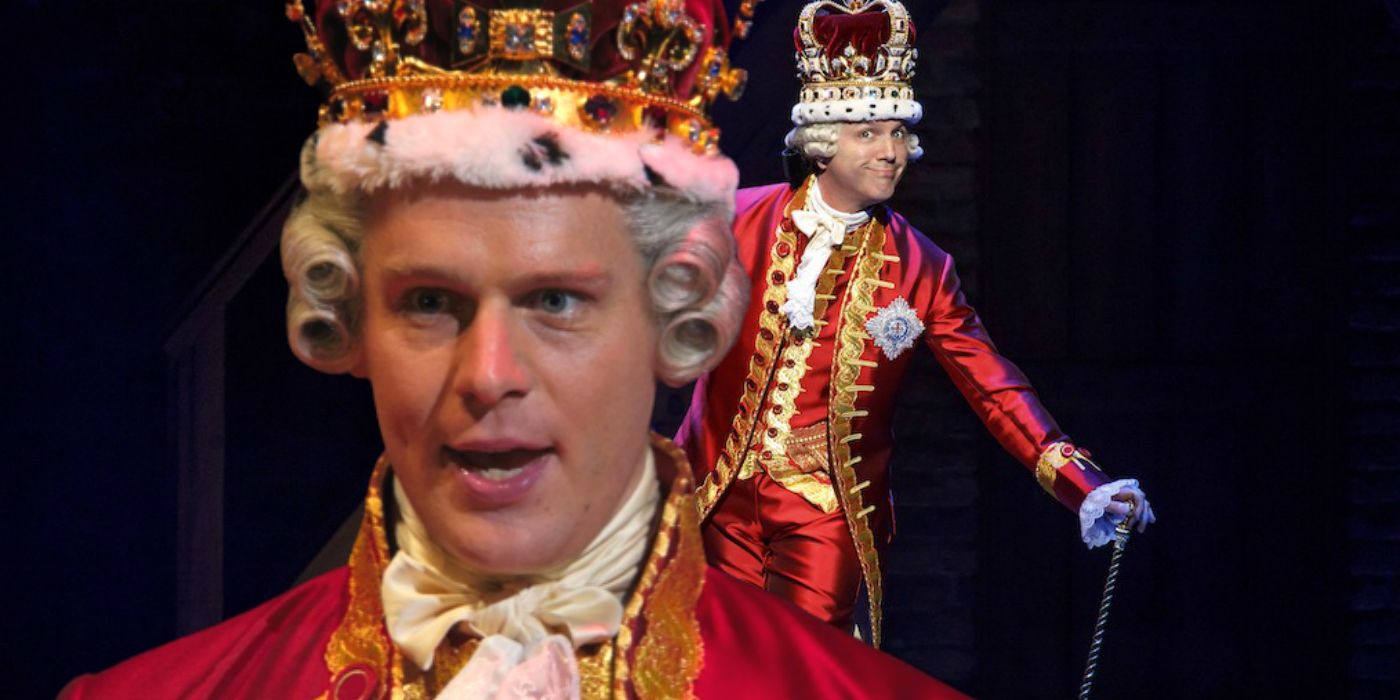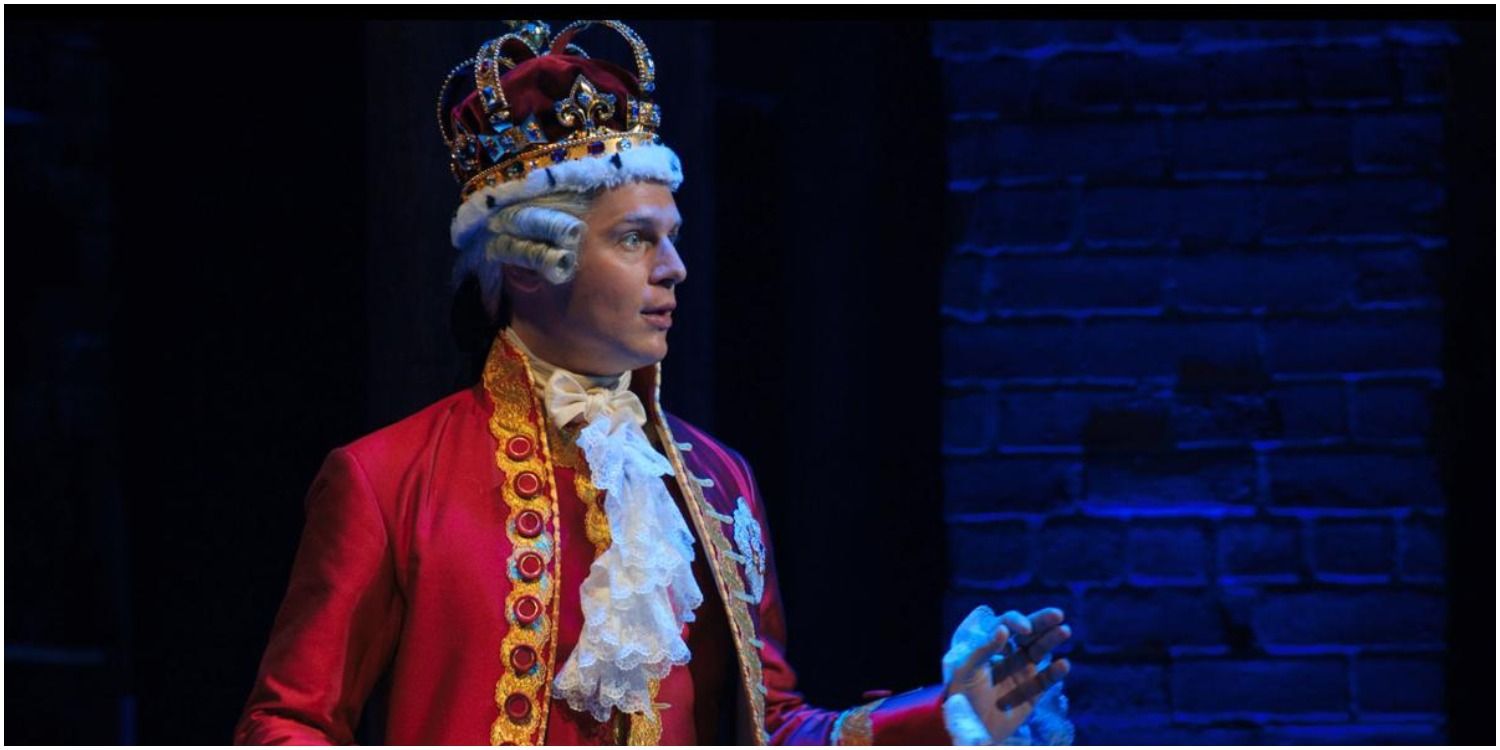Lin-Manuel Miranda's Hamilton features three songs from King George III (Jonathan Groff) that comment on the events of and following the American Revolution before sauntering to a goofy, lyric-less chorus. Premiering Off-Broadway in 2015, Hamilton was met with critical and commercial success unprecedented in recent musical theater history. A filmed version of the show has recently been released on Disney+ featuring almost the entirety of the original Broadway cast.
Despite being a historically significant figure as well as a highly billed character, King George III is removed from the central events of Hamilton, having no direct interactions with any of the other characters. Instead, all of his songs are comedic solos with verses musing on events from a distance and voicing his bewildered incredulity at the massive changes taking place in the colonies and, subsequently, the United States. Unlike some other actors who play multiple characters, England's Revolutionary-era monarch is traditionally played by an actor with no other roles.
The chorus that is shared between all of King George's songs does not have proper lyrics, instead consisting only of melodic "da da das," which stands out in Hamilton in particular because every other song is so meticulous in its word choice. This stems in part from the fact that his numbers are also much more like traditional show tunes than anything else in the heavily rap-influenced production. Especially in Act I, such dissonance is used to show the disconnect between the colonies and the monarchy that would play a part in America's secession. This is in direct contrast to someone like the Marquis de Lafayette, who serves as a sustaining link between the colonies and Europe and who, perhaps relatedly, boasts some of Hamilton's fastest, most complex rhymes.
The apparent lack of comprehensible substance in the refrain may also be a reference to King George III's documented bouts of mental illness, to which the line "When you're gone, I'll go mad" in "You'll Be Back" alludes. Although the exact nature of his condition was poorly understood at the time and remains debated to this day, it was quite serious throughout his adult life and has colored much of his caricatured depiction in the States since.
In a musical so saturated with verbal wit, King George III is the character most clearly intended for broad comic relief. To that end, on the most basic level, his signature chorus simply functions as excellent punctuation for the absurdity of his oblivious verses like "I will kill your friends and family to remind you of my love." And when the "da da das" become "die, die, die," in the chorus, George III's banal malice comes through.
However, the personal and political idiosyncrasies that contributed to the British King's historical importance are certainly reflected as well. Hamilton combines these elements with an over-the-top performance to portray the monarch as a laughable tyrant, in much the same way that the colonies did in the time of the American Revolution in order to promote their growing nationalism. But with the benefit of hindsight, the show also makes clear that the United States was and is more than capable of creating its own problems without the help of a pseudo-despotic scapegoat.


